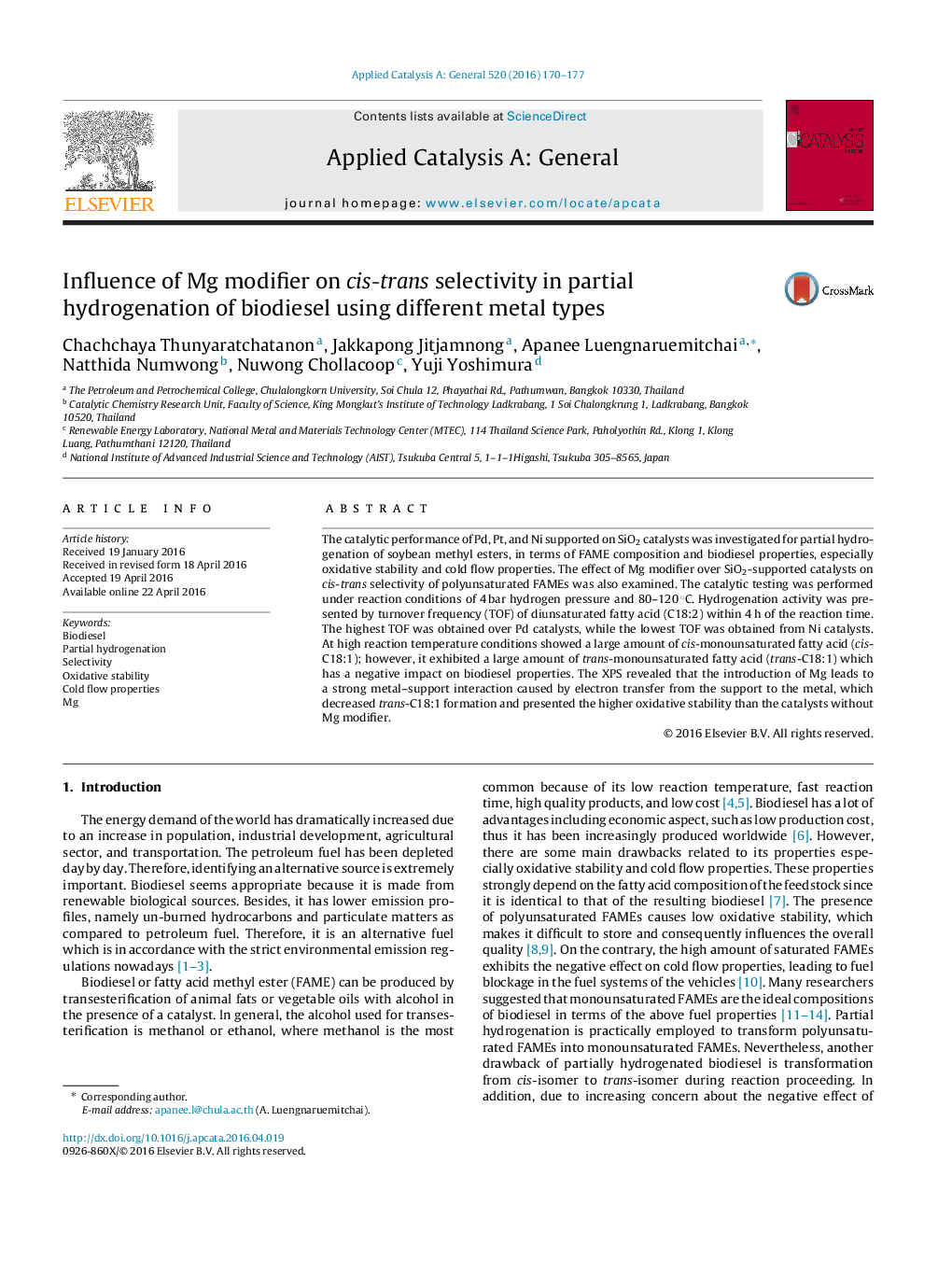| Article ID | Journal | Published Year | Pages | File Type |
|---|---|---|---|---|
| 38931 | Applied Catalysis A: General | 2016 | 8 Pages |
•Pd exhibits the highest C18:2 conversion at any reaction time.•High temperature provides high catalytic activity and trans-C18:1 formation.•Mg decreases trans-C18:1 formation due to the basicity of the catalyst.•Oxidative stability is improved by partial hydrogenation.
The catalytic performance of Pd, Pt, and Ni supported on SiO2 catalysts was investigated for partial hydrogenation of soybean methyl esters, in terms of FAME composition and biodiesel properties, especially oxidative stability and cold flow properties. The effect of Mg modifier over SiO2-supported catalysts on cis-trans selectivity of polyunsaturated FAMEs was also examined. The catalytic testing was performed under reaction conditions of 4 bar hydrogen pressure and 80–120 °C. Hydrogenation activity was presented by turnover frequency (TOF) of diunsaturated fatty acid (C18:2) within 4 h of the reaction time. The highest TOF was obtained over Pd catalysts, while the lowest TOF was obtained from Ni catalysts. At high reaction temperature conditions showed a large amount of cis-monounsaturated fatty acid (cis-C18:1); however, it exhibited a large amount of trans-monounsaturated fatty acid (trans-C18:1) which has a negative impact on biodiesel properties. The XPS revealed that the introduction of Mg leads to a strong metal–support interaction caused by electron transfer from the support to the metal, which decreased trans-C18:1 formation and presented the higher oxidative stability than the catalysts without Mg modifier.
Graphical abstractFigure optionsDownload full-size imageDownload high-quality image (188 K)Download as PowerPoint slide
